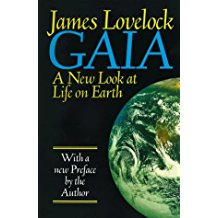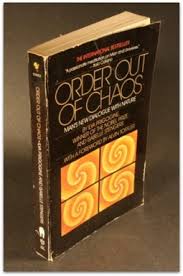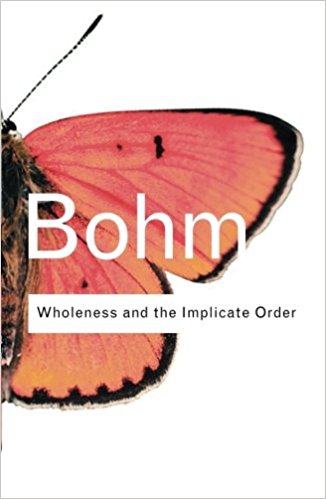The Politics of Information Part Four
Leopold Kohr
Despite his his originality and his influence as a thinker, the work of Leopold Kohr remains too little known. His philosophy in a nutshell was contained in his crucial book The Breakdown of Nations, published in 1957, where he wrote: "...there seems to be only one cause behind all forms of social misery: bigness...Whenever something is wrong, something is too big." The idea that everything has its proper size had been developed in the biological sciences by D'arcy Thompson in his 1917 book On Growth and Form, and later by J.B.S. Haldane in his essay "On Being the Right Size," but Kohr was the first, so far as I know, to apply it to the human and social worlds, creating what Ivan lllich called a "social morphology." E. F. Schumacher was Kohr's student, and brought Kohr's idea to wide attention in Small Is Beautiful (1973). Illich, likewise, acknowledged Kohr as his teacher and inspiration in books like Tools for Conviviality and others.
I was lucky to meet Kohr in the summer of 1989 when he came to Toronto to lecture at a gathering of his fellow decentralists. He was already in his eightieth year and somewhat deaf, but still a lively and charming speaker and companion. Happily, he had a couple of hours free to sit down and talk with me in the Ideas studio. The following programme was broadcast shortly afterwards. A transcript can be found on the Transcripts page which I have recently added to the site...
Religion and the New Science
This series had its genesis at a meeting of the Royal Society of Canada - in 1985, as I recall, though it may have been the year before. The subject was the relations of religion and science, and several of the people featured in this series were present - among others physicist Iain Stewart, philosopher Albert Shalom, and British scientist James Lovelock, whose "Gaia hypothesis" was then still new and controversial. I had long been interested in the developments in physics and other sciences that were leading some to speak of a "new science," and in the implications of these developments for theology and philosophy, so I took the Royal Society meeting as a starting point for the following programmes. The series came back to mind recently when I read an essay David Bohm had contributed to a festschrift for Owen Barfield back in the 1970's. Bohm, an adventurous philosopher physicist, is one of the featured speakers in the second programme of the series, along with Ilya Prigogine, a Nobel laureate in chemistry for his work on irreversibility, complex systems, and what he called dissipative structures. Also featured are James Lovelock and Rupert Sheldrake, whose then recently published A New Science of Life had so scandalized fellow biologist Sir John Maddox, the editor of the journal Nature, that he had declared it a "candidate for burning." Reading Bohm's essay, it seemed to me it was time to share these still vital and interesting voices.
Discussion of religion and science has a long history, but the discussion entered a new phase in the years before these programmes were broadcast in 1985. Among the reasons were recent experimental confirmation of the reality of quantum entanglement, or what Einstein had called "spooky action at a distance"; and the appearance of the sciences of complexity and emergent order, sciences which were then completing the job begun by early 20th century physics in overturning the postulates of classical science. The world according to science was becoming more subtle and mysterious. Rupert Sheldrake suggested that it was time to replace the old metaphor of "laws of nature" with something more provisional like "the habits of nature." David Bohm suggested that mind and matter must have "the same basic order" - two aspects of a single underlying process. Ilya Prigogine dared to "dream...about a more unified culture" in which science no longer posited a universe in which human consciousness is an anomaly.
In what follows scientists, philosophers, and theologians discuss the implications of this "new science." More than thirty years have elapsed since these shows were first broadcast, and no doubt details would need to be changed if they were to revised today, but it seems to me that the outlines hold up pretty well. I should also note that the series was honoured by the Canadian Science Writers Association as the year's best radio programme. My work rarely attracted prizes, but this was an exception, and the $1,000 that went with it, I recall, was a welcome addition to a then somewhat strained household budget...
The people heard in the series, in order of appearance, are as follows:
Part One: James Lovelock, Morris Berman, Rupert Sheldrake, Stephen Toulmin, Albert Shalom, Philip Hefner, Trevor Levere, Ravi Ravindra, Ilya Prigogine, Jacob Needleman
Part Two: David Bohm, James Lovelock, Rupert Sheldrake, Ilya Prigogine, David Peat
Part Three: Stephen Toulmin, Robert Rosen, Iain Stewart, David Bohm, Philip Hefner, Thomas Berry, Jacob Needleman, Ravi Ravindra
Religion and the New Science Part Two
Religion and The New Science Part Three
Refining Development
"We must embark on a bold new program for making the benefits of our scientific advances and industrial progress available for the improvement and. growth of underdeveloped areas."
-U.S. President Harry Truman, Inaugural Address, Jan. 20, 1949
This series is another in the set of programmes I made between 1985 and 1995 on the theme of "development." In this. case, the programmes were an overflow from "The Age of Ecology," an eight hour series broadcast in the spring of 1990, which was already longer than anything one person had presented on Ideas before. (Going back to the 1970's, there had been lots of lengthy Ideas series on big themes like "Rivers" or "Balance and Biosphere" but they always assembled the work of many different programme-makers. I was pushing the limits of what could be done by one writer/broadcaster.). Creating a separate series for the interviews concerned, broadly speaking, with economic development made sense, and "Redefining Development" was the result.
These programmes took up many of the same issues as "The Earth is Not an Ecosytem," broadcast a couple of years later. The first considered the question of whether development could be renewed and refocused under the name sustainable development. David Brooks, then with the International Development Research Centre in Ottawa, argued for this view. Wolfgang Sachs asserted, to the contrary, that development was a concept, deserving only "an obituary," as he put it in The Development Dictionary, a volume he edited and published two years after this broadcast. The second programme featured Patricia Adams of Toronto's Probe International. She had just published Odious Debts, a study of the debt crisis produced by all the lending and borrowing that had gone on in the name of development. With reference to a doctrine in international law which allows repudiation of debts where the money is misappropriated or the debt is undertaken under fraudulent circumstances, she claimed that many of the debts incurred were "odious," The third broadcast gave the stage to Herman Daly, an American economist who had spent much of his career reflecting on how to get to a no-growth, or steady state economy. And, finally, I presented Robert Swann and Susan Witt of the Schumacher Society in Great Barrington, Massachusetts, pioneers in creating the modallities of a new economics through their work in developing local currencies and community land trusts.
The series was broadcast in the fall of 1990...






